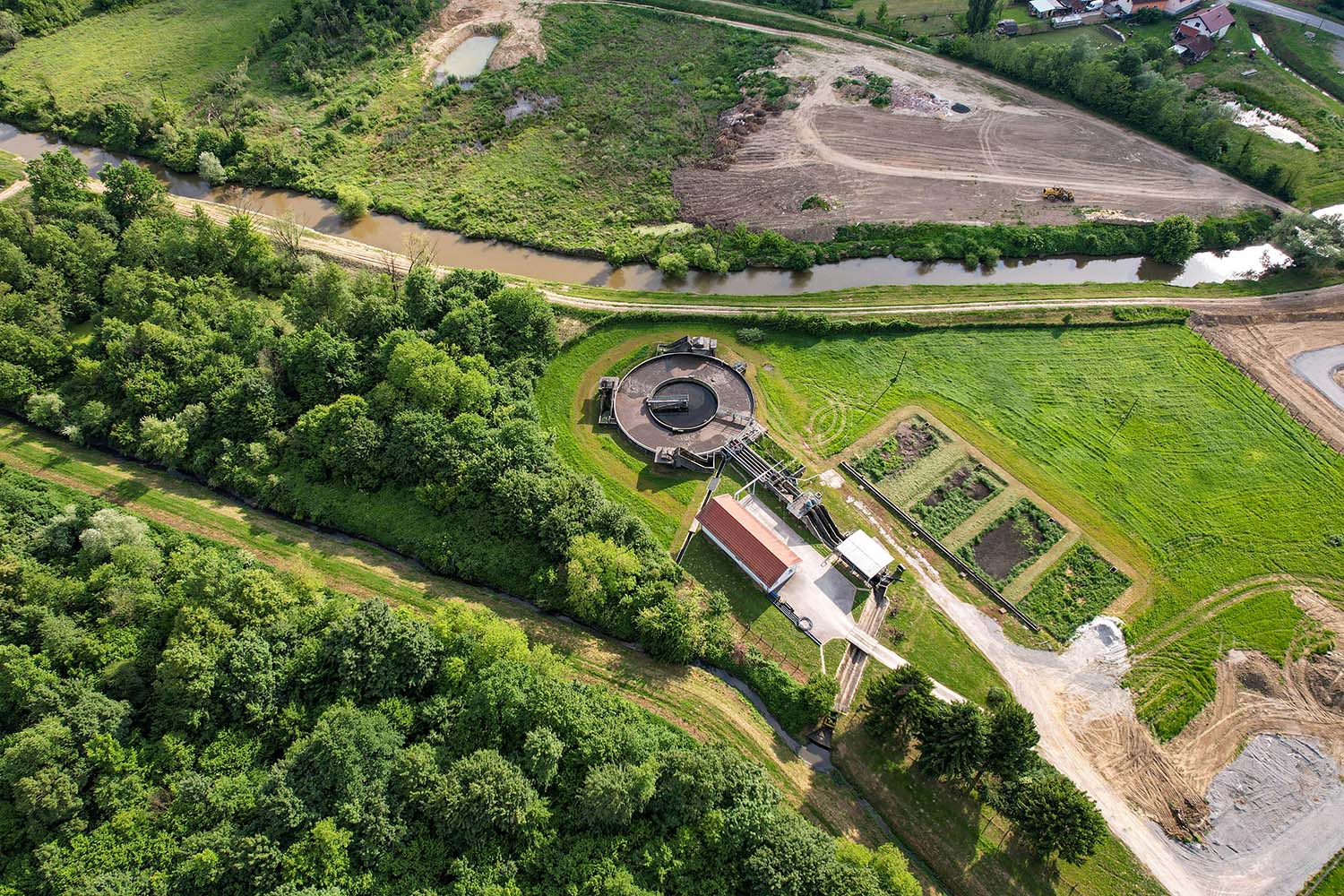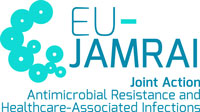STEWARDSHIP
The second European Joint Action on Antimicrobial Resistance and Healthcare-Associated Infections (EU-JAMRAI2) stands for the appropriate use of antimicrobials in human and animals, as well as the impact of their use on environmental contamination. EU-JAMRAI2 contributes to the wider uptake of state-of-the-art Infection and Prevention Control (IPC) for both community-acquired and healthcare-associated infections, and Antimicrobial Stewardship (AMS) strategies in various settings.
The Joint Action helps Member States and Associated Countries in the update of their National Action Plans (NAP) and supports the implementation of core elements and core competencies for AMS and IPC.

Stewardship in human health

Progress Years 1-2 (2024-2025)
The main progress has been focused on the conduction of 3 surveys in the corresponding 3 healthcare levels, hospital, primary care and long-term care facilities and the subsequent organization of the 3 workshops focusing on each of these settings. For details on progress see below:
Three meetings with all contributing partners:
- Kick off meeting: 4th April 2024
- Follow up meeting 1: 12th September 2024
- Follow up meeting 2: 25th June 2025
Three international surveys on AMS programmes: Conduction of three surveys to identify the core elements and core competencies outlined in the current National Action Plans (NAP) on Antimicrobial Resistance or equivalent National Strategies or Programmes, referring to Hospital AMS, Primary Care AMS and LTCF in the elderly AMS programmes across Europe.
See the three questionnaires here:
- International survey on Antimicrobial Stewardship Programs in hospitals
- International survey on Antimicrobial Stewardship Programs in Primary Care
- Antimicrobial stewardship in long-term care facilities for the elderly
Main result: Current status of national AMS programmes overview in EU
Three face-to-face workshops on AMS programmes: Gathering leading experts, institutions and key stakeholders in an in-depth and collaborative discussion conforming the first step towards establishing common core elements and competencies across EU healthcare institutions, optimizing antimicrobial use and ultimately enhancing patient outcomes in Europe in the three settings: hospital, Primary Care and Long-term care facilities.
- Shaping the Future of Antimicrobial Stewardship in Europe: A Workshop for a Hospital Harmonized Framework
- Antimicrobial Stewardship in Primary Care: A Workshop to build a Unified Approach in Europe
- Antimicrobial Stewardship Programs for Long-Term Care Facilities for the Elderly: A Workshop Towards a European Framework
Main result: first impressions regarding the future common frameworks.
Functional design of digital platform to support P2P programmes in AMS: Key activities in 2025 have focused on outlining the functional features of a digital platform designed to support P2P exchange programmes, including mentorship and observership. This digital platform will serve as a hub for AMS professionals, facilitating interaction, collaboration, and access to experienced mentors for best practices and professional development.
Description of Peer-to-Peer exchange programmes: Preliminary draft with comprehensive information on the objective, features, characteristics and operation procedure development of the online mentorship programmes, on-site observership programmes and real experience webinars.
AMS in Human Health is structured around three main objectives, outlined as follows:
Provide EU framework for AMS programmes and self-assessment system: Work towards providing a European framework for AMS programmes on core elements and competencies in hospital, primary care and long-term care facilities and the development of a self-assessment system for these programmes.
P2P exchange programmes and real experience implementation: These initiatives encompass online mentorship programmes, on-site observership programmes as well as real experience webinars (Small-group sessions with experts).
These initiatives aim to:
- Facilitate best practice sharing across European countries
- Provide guidance and support to healthcare professionals in the implementation and performance of Antimicrobial Stewardship Programmes (ASP) in Europe
- Professional Empowerment and skills acquisition
- Promote the practical implementation of ASP elements tailored to local settings and needs
Network on AMS contact points: Work to establish a network on AMS contact points across European countries to ensure the sustainability of P2P exchange programmes facilitating professional interaction and implementation of best practices to make the EU a best practice region on AMS.
Stewardship in animal health
Following the recommendations from the first EU-JAMRAI (2017-2021), establishing harmonized core elements and standards at the European level, as well as a minimum framework to be used by all EU Member States, is considered a priority for the effective implementation of AMS and IPC programs. EU-JAMRAI 2 continues to work aiming to provide guidance on how to develop and implement an AMS program in the animal health sector, which will improve standardisation, harmonisation and facilitate benchmarking.
Guidelines for AMS in food-producing animals and companion animals are being developed by:
- Conducting a comprehensive review of existing AMS programs and guidance documents
- Meeting stakeholders and experts to discuss and define core elements and standards
- Testing and validating practical guidelines through peer-to-peer activities

Progress Year 2 (2025)
A workshop was organized (again together with WP 7.2) to identify core-elements and core-competencies, and to facilitate the exchange of experiences and practices, models, and synergies on AMS and IPC between professionals in the human, animal and environmental health sectors. Download the workshop report.
A series of webinars, VOICES FROM THE FIELD started in autumn 2025, where experts from across Europe share their hands-on experiences in implementing AMS and IPC in the animal health sector.
A first draft of the AMS guidelines for companion and food-producing animals is available here (expected in December 2025)
Progress Year 1 (2024)
Focus has been on collecting, reviewing and analysing information related to the AMS guidelines, protocols, practices, and tools in the animal health sector, in coordination with partners of IPC in animal health (WP 7.2).
Federation of Veterinarians of Europe (FVE) in close collaboration with partners has been conducting a comprehensive literature review on the existence of veterinary AMS guidelines, protocols, practices, and tools in the food-producing and companion animal sectors worldwide.
A survey, jointly developed with IPC in animal health (WP 7.2) and with support from FVE, was distributed to collect information on the actors and their impact on:
a) Behavioural change in IPC & biosecurity and AMS
b) The existing IPC and AMS programs, tools, and practices
c) The main healthcare-associated and preventable infections per animal species.
Stewardship in the environment

Progress Year 2 (2025)
Gap analysis and needs assessment:
A target-specific gap analysis, based on the Knowledge, Attitudes, and Practices (KAP) methodology, will support the design of training interventions that are tailored to the specific needs of stakeholder groups. Preliminary findings indicate significant gaps in the integration of environmental considerations. While stakeholders demonstrate positive attitudes and recognise the value of cross-sectoral collaboration, the application of recommended practices is heterogeneous. Identified barriers include constrained financial and human resources, high operational workloads, unclear regulatory guidance, insufficient targeted training, and occasional resistance to change. Stakeholders consistently prioritise access to funding, structured training programmes, expert technical support, advanced monitoring tools, and public awareness initiatives, and exhibit strong willingness to engage in targeted training interventions.
Review of innovative delivery methods and creation of digital guide to select best training method for AMR capacity-building interventions:
Given the complexity of antimicrobial stewardship (AMS) strategies, traditional training methods alone may be insufficient to achieve the desired changes in knowledge, attitudes, and practices. Innovative learning approaches are therefore essential to effectively train professionals across sectors and ensure lasting impact. To support this, we have identified 25 innovative training methodologies and developed a digital toolkit to help institutions design AMR training interventions tailored to their target audiences, contexts, and resources (Access to Digital Guide). It is open to anyone interested in building AMR-related capacities as it considers target groups relevant to human health, veterinary, and environmental fields, reflecting a One Health approach. Its content has been validated through in-person and online focus groups with representatives from diverse sectors.
Second year Workshop on Environmental AMS:
The event brought together representatives from 26 institutions across 15 EU countries, with over 50 participants. Second-year results were presented, followed by working sessions on ongoing activities. The workshop included all participants involved in antimicrobial stewardship, infection prevention and control, and surveillance within EU-JAMRAI 2, ensuring alignment of shared objectives and coordinated efforts. (Program, Presentations)
Progress Year 1 (2024)
Identification of target groups and establishment of a representative network:
Policymakers, antimicrobial producers, healthcare managers, food producers, and wastewater managers have been prioritized for training under the environmental antimicrobial stewardship strategy, as they have the greatest potential to reduce emissions from antimicrobial production and use (Full Report). Engaging these often-overlooked stakeholders strengthens human and animal health efforts and conventional stewardship interventions. A representative network of over 80 participants has been established, actively involved in designing and delivering trainings to ensure real-world relevance. Individuals wishing to contribute in-kind can register through EU-JAMRAI 2 – T6.3: Partnership Network for In-Kind Contributors – Fill in form; participation is voluntary and depends on availability and willingness to support specific activities.
Review of existing training materials on the topic:
Available educational materials and interventions on AMR have been reviewed at both national and EU levels to identify gaps related to environmental antimicrobial stewardship within existing curricula, particularly for target groups identified as high priority (Full Report and Database – available upon request at aemps.jamrai@aemps.es). In summary, a major limitation of existing AMS frameworks is their narrow focus on prescribing, often overlooking broader aspects of the antimicrobial use (AMU) cycle—such as pre-use and post-use phases, including antimicrobial manufacturing and residue management. To address this, EU-JAMRAI 2 will develop a core competency framework that integrates a stronger environmental perspective into AMS strategies.
First year Workshop on Environmental AMS:
The event brought together representatives from 13 institutions in 7 EU countries, with over 30 participants. First-year results were shared, followed by open discussions with the representative network to gather feedback on EU-JAMRAI 2 environmental antimicrobial stewardship interventions (Recording)
According to the Council Recommendation on stepping up EU actions to combat antimicrobial resistance through a One Health approach, F (22), member states should ensure that national continuous education programmes and curricula include cross-sectoral training on antimicrobial resistance, with a focus on environmental approaches.
In response, EU-JAMRAI 2 provides targeted training and mentorship to key professionals on the environmental dimension of AMR, showing how antimicrobial production and use can release residues, resistant bacteria, and resistance genes into the environment, thereby driving the emergence and spread of AMR and increasing environmental hazards and public health risks, while simultaneously equipping professionals with practical strategies for sustainable antimicrobial stewardship, environmental monitoring, and risk mitigation.
